
The 3rd Brigade is a combined arms brigade of the Australian Army, principally made up of the 1st and 3rd Battalions of the Royal Australian Regiment. Initially raised in 1903 as part of the post-Federation Australian Army, it was removed from the order of battle in 1906 following the restructure of the field force. It was re-formed in 1914 for service during World War I, taking part in the fighting at Gallipoli and on the Western Front in Europe. During World War II the brigade was used in a defensive role before it was disbanded in 1944. It was re-raised in 1967 for service during the Vietnam War and later went on to provide the nucleus of the deployment to East Timor during the Australian-led intervention in 1999. The brigade is currently based at Lavarack Barracks in Townsville, Queensland.
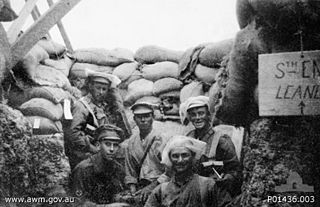
The 12th Battalion was an infantry battalion originally raised for the First Australian Imperial Force during the First World War. The battalion was recruited from Tasmania, South Australia and Western Australia and formed part of the 3rd Brigade, 1st Division. It served throughout the war, firstly during the Gallipoli Campaign and then on the Western Front. During the interwar years, the 12th Battalion was re-raised as a part-time military unit and during the Second World War undertook garrison duties in Australia, but did not see combat. Today its lineage is perpetuated by the 12th/40th Battalion, Royal Tasmania Regiment, a unit which continues to serve in the Australian Army Reserve.

The 9th Brigade is a Reserve formation of the Australian Army headquartered at Keswick Barracks in Keswick, South Australia, with elements located in New South Wales and South Australia. The brigade was first raised in 1912 in New South Wales following the introduction of the compulsory training scheme.
The 4th Brigade is a brigade-level formation of the Australian Army. Originally formed in 1912 as a Militia formation, the brigade was re-raised for service during World War I, elements of the brigade served at Gallipoli and in the trenches on the Western Front before being disbanded in 1919. In 1921, the brigade was re-raised as a unit of Australia's part-time military forces, based in the state of Victoria. During World War II the brigade served in the New Guinea and New Britain campaigns. Following the war, the brigade formed part of the 3rd Division, however, it was later reallocated to the 2nd Division, where it serves as a Reserve combined-arms formation including units and personnel from all corps of the Army including armoured, infantry, artillery, engineers, signals and ordnance.
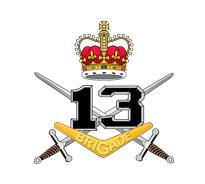
The 13th Brigade is an Army Reserve formation of the Australian Army. Originally formed in 1912 as a Militia formation in Victoria, the brigade was re-raised as a First Australian Imperial Force unit during World War I and fought on the Western Front. In the interwar years, the brigade was re-raised as a part-time formation based in Western Australia and later fought in the New Britain Campaign during World War II.

The 11th Brigade is an Australian Army brigade which currently comprises most Australian Army Reserve units located in Queensland. The brigade was first formed in early 1912 following the introduction of the compulsory training scheme. Later, as part of the 3rd Division and saw action during World War I on the Western Front as part of the First Australian Imperial Force. In the interwar years, the brigade was re-raised with its headquarters in Brisbane.

8th Brigade is an Australian Army Reserve training formation. It is headquartered in Sydney, and has subordinate units in various locations around New South Wales and the rest of Australia. These units are tasked with delivering basic and initial employment training to Reserve soldiers.

5th Brigade is a brigade of the Australian Army. Originally raised as a militia formation in 1912, the 5th Brigade was re-raised for overseas service in 1915 as part of the Australian Imperial Force during the First World War. The brigade then served during the Gallipoli Campaign and on the Western Front. During the inter-war years, it was re-raised as a part-time formation as part of Citizens Military Force. It undertook garrison duties in Australia during the Second World War, but was not deployed overseas before being disbanded in 1944. Following the war, the brigade was re-raised in 1948 once again and it is currently a Reserve combined arms formation based in New South Wales and forms part of the 2nd Division.

The 14th Battalion was an infantry battalion of the Australian Army. Originally raised in 1914 as part of the Australian Imperial Force for service in World War I, the battalion served at Gallipoli initially before being sent to France where it served in the trenches along the Western Front until the end of the war, when it was disbanded. It was raised again in 1921 as a part-time unit of the Citizen Forces based in Victoria. Later, during World War II the battalion was called up for defensive duties to guard against possible Japanese invasion, but in late 1942 it was merged with the 32nd Battalion to become the 14th/32nd Battalion.
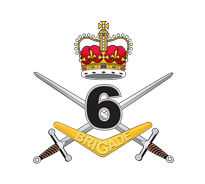
The 6th Combat Support Brigade was an Australian Army brigade. First formed in 1912 as a Militia formation to provide training under the compulsory training scheme, the brigade was re-raised during the First World War as an infantry unit of the all volunteer Australian Imperial Force. It subsequently served at Gallipoli and in France and Belgium on the Western Front. In the 1920s, as part of a reorganisation of the Australian Army, it became part of the 3rd Military District of the Citizens Military Force, encompassing units from Victoria and South Australia. In 1991, it became part of the Ready Reserve Scheme, based at Enoggera Barracks, in Brisbane, Queensland, before being disbanded in 1996 when the scheme was discontinued. The brigade was re-raised on 1 March 2010 to oversee the Army's command support and intelligence, surveillance, target acquisition and reconnaissance units. It was disbanded on 13 December 2024 as part of changes to the structure of the Army.

The 2nd Health Brigade (2HB) is an Australian Army brigade. The 2nd Brigade was formed in 1903 as a militia infantry formation based in Victoria, the brigade later served during the First World War as part of the Australian Imperial Force, allocated to the 1st Division. During the war, the 2nd Brigade took part in the fighting at Gallipoli, including the Battle of Krithia where it lost almost a third of its strength. Later they took part in the Battle of Lone Pine before being withdrawn back to Egypt in December 1915. Following this the brigade was transferred to the Western Front in France and Belgium where, between March 1916 and the armistice in November 1918, they took part in most of the major Allied operations.

The 15th Brigade was an infantry brigade of the Australian Army. Originally raised in 1912 as a Militia formation, the brigade was later re-raised in 1916 as part of the First Australian Imperial Force during World War I. The brigade took part in the fighting on the Western Front in France and Belgium during 1916–1918 before being disbanded in 1919. After this it was re-raised as a part-time unit of the Citizens Force in 1921 in Victoria. During World War II the brigade undertook defensive duties and training in Victoria and Queensland, before being deployed to New Guinea in 1943. Over the course of 1943 and 1944, it took part in the Salamaua–Lae, Markham–Ramu campaigns before returning to Australia in late 1944. In mid-1945, the brigade was committed to the Bougainville campaign, before being disbanded following the end of hostilities.

The 14th Brigade was an infantry brigade of the Australian Army. Originally raised in 1912 as a Militia formation, it was later re-raised in 1916 as part of the First Australian Imperial Force for service during World War I, the brigade was assigned to the 5th Division and served on the Western Front between 1916 and 1918 before being disbanded. It was later re-raised as part of the Australia's part-time military forces during the inter-war years. During World War II, the brigade was a Militia formation and it took part briefly in the New Guinea campaign with elements of the brigade undertaking defensive duties around Port Moresby before taking part in the fighting along the Kokoda Track and around the Japanese beachheads at Buna–Gona. The brigade was disbanded in mid-1943 as part of a rationalisation of Australian military forces as a result of manpower shortages.

The 10th Brigade was an infantry brigade of the Australian Army. Originally formed in 1912 as a Militia formation, the brigade was re-raised in 1916 as part of the expansion of the Australian Imperial Force following the end of the Gallipoli campaign. It subsequently saw service on the Western Front in France and Belgium during World War I. After the war it was disbanded but was re-raised in 1921 as a part-time formation based in the state of Victoria. During World War II the brigade was used in a garrison role in Australia before being disbanded in 1942. The brigade is slated to be re-raised as the Army's 'Fires Brigade' to host and operate the Australian Army's High Mobility Rocket System (HIMARS) and National Advanced Surface-to-Air Missile System (NASAMAS)
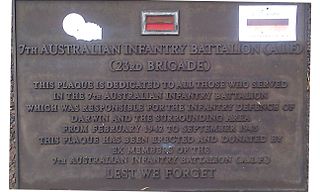
The 23rd Brigade was a brigade of the Australian Army. It was briefly raised in 1912 as a Militia formation providing training as part of the compulsory training scheme. Later, it was re-formed in July 1940 for service during the Second World War, the brigade was initially a formation of the Second Australian Imperial Force assigned to the 8th Division; however, after its sub units were captured by the Japanese in 1942 it was reformed with Militia battalions and was mainly used in a garrison role around Darwin, in the Northern Territory, until late in the war when it was committed to the fighting against the Japanese on Bougainville. It was disbanded in 1946.

The 47th Battalion was an infantry battalion of the Australian Army. It was originally raised in 1916 for service during the First World War. The battalion then took part in the fighting in the trenches of the Western Front in France and Belgium, before being disbanded in early 1918 to provide reinforcements for other Australian units that were suffering from a manpower shortage following the German spring offensive. In 1921, it was re-raised as a part-time unit of the Citizens Force, which later became the Militia. During this time it was based in south-east Queensland and in 1927 it became known as the "Wide Bay Regiment". During the Second World War the 47th Battalion took part in fighting in New Guinea and Bougainville, before being disbanded again in January 1946. Later, the battalion was re-raised before eventually being subsumed into the Royal Queensland Regiment in 1960.

The 29th Battalion was an infantry battalion of the Australian Army. First formed in 1915 for service during the First World War as part of the Australian Imperial Force (AIF), it fought in the trenches of the Western Front in France and Belgium before being disbanded in late 1918 to provide reinforcements for other heavily depleted Australian units. In 1921, following the demobilisation of the AIF, the battalion was re-raised as a unit of Australia's part-time military forces, based in Melbourne, Victoria, before being amalgamated with the 22nd Battalion in 1930. It was later re-raised in its own right and, following the outbreak of the Second World War, undertook garrison duties in Australia before being amalgamated with the 46th Battalion to form the 29th/46th Battalion in late 1942, subsequently seeing service against the Japanese in New Guinea and on New Britain.
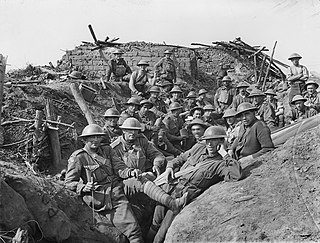
The 50th Battalion was an infantry battalion of the Australian Army. It was originally raised in Egypt in early 1916 for service during World War I, drawing a cadre of experienced personnel from the 10th Battalion. After the unit's formation, it was transferred to Europe where it took part in the fighting in the trenches of the Western Front in France and Belgium. Following the end of hostilities, the battalion was amalgamated with the 51st Battalion in early 1919 as demobilisation reduced the numbers in both battalions. In the inter war period, the battalion was briefly reformed in 1921 as a part-time unit based initially in South Australia and then later in Tasmania. At different periods it was amalgamated with both the 10th and 12th Battalions. The battalion did not see combat during World War II, being employed as garrison troops in Australia instead, and it was disbanded in mid-1945.

The 37th Battalion was an infantry battalion of the Australian Army. It was originally raised in 1916 for service during the World War I and took part in the fighting in the trenches of the Western Front in France and Belgium and was disbanded in 1918. In 1921, the battalion was re-raised as part of the part-time Citizens Forces, although it was later amalgamated with the 52nd Battalion in 1930 due to manpower shortages. In 1937, the battalion was briefly re-raised in its own right before being amalgamated with the 39th Battalion. It later returned to the order of battle in its own right as the Australian military was expanded due to concerns of a future war in Europe. Following the outbreak of World War II, the 37th Battalion served in a garrison role until 1942 when it was once again amalgamated with the 52nd Battalion.
The 43rd Battalion was an Australian Army infantry unit that was originally formed during the First World War as part of the all-volunteer Australian Imperial Force. Raised in early 1916, the battalion subsequently fought in the trenches of the Western Front from late 1916 until the end of the war in November 1918. After the war, the 43rd was re-raised as a part-time unit in South Australia, serving until 1930 when it was merged with the 48th Battalion. During the Second World War, the 43rd was briefly re-raised between 1942 and 1944, but did not see action before it was disbanded. After the war, the 43rd and 48th were once again merged, existing until 1960 when they became part of the Royal South Australia Regiment.



















